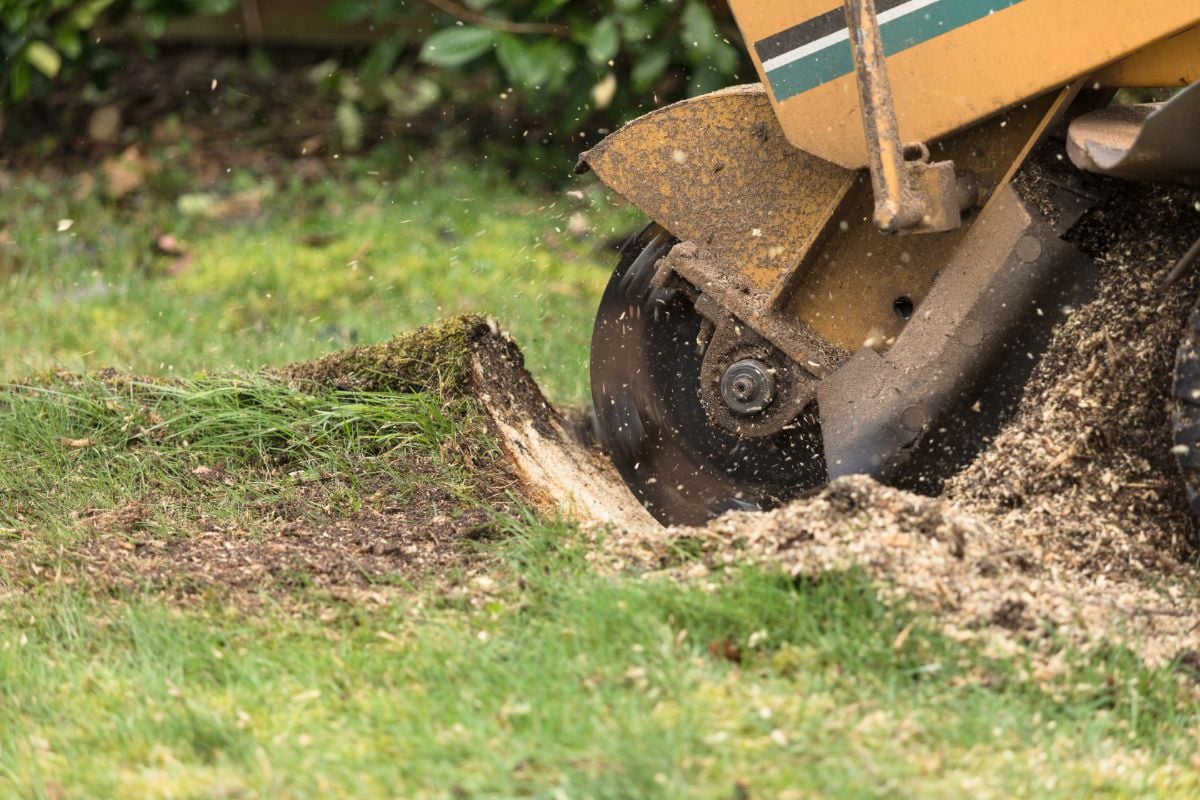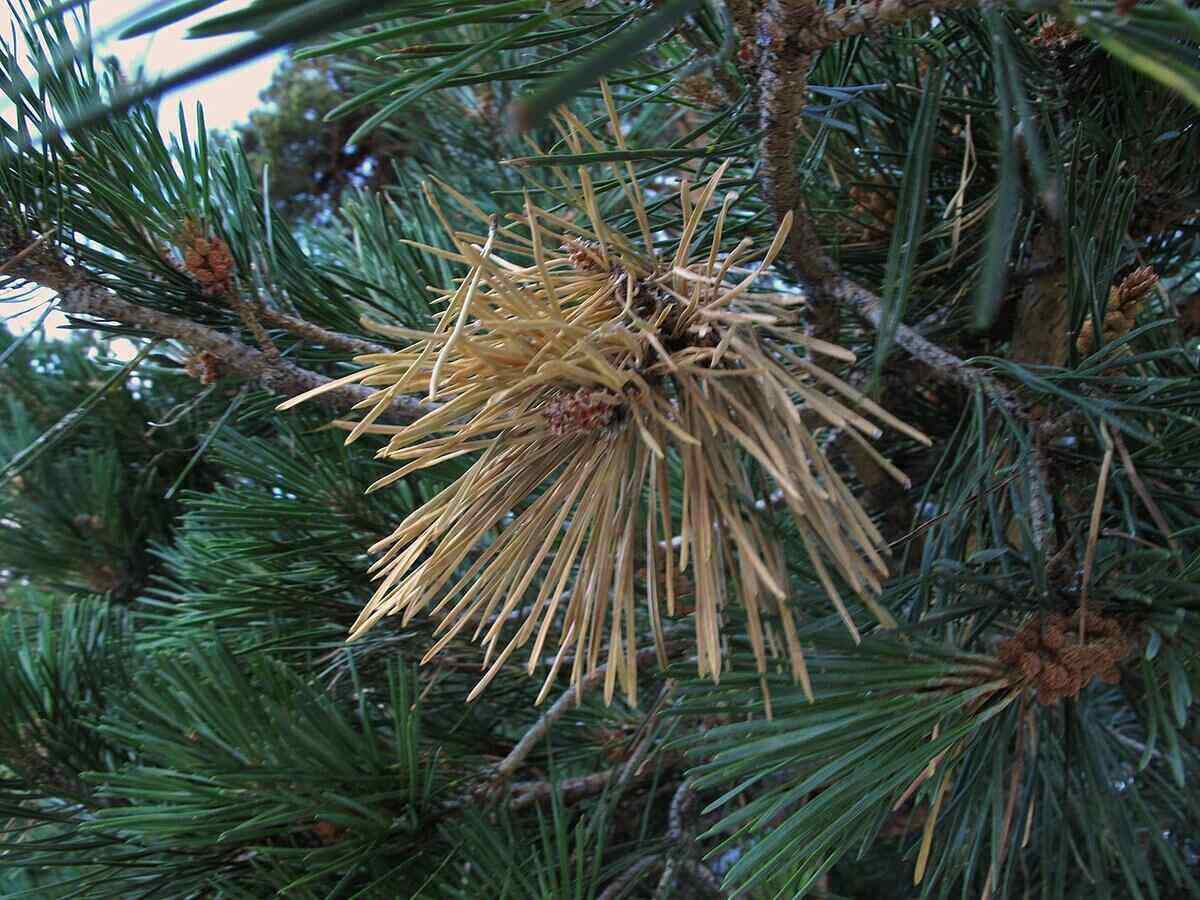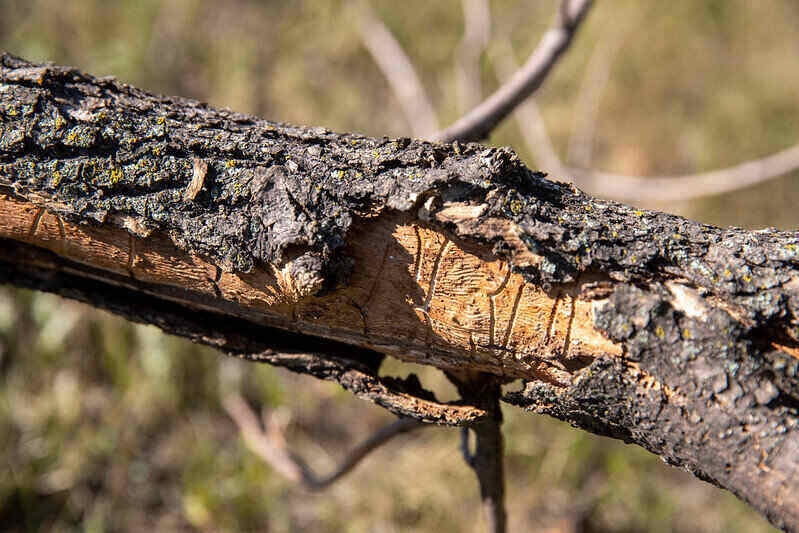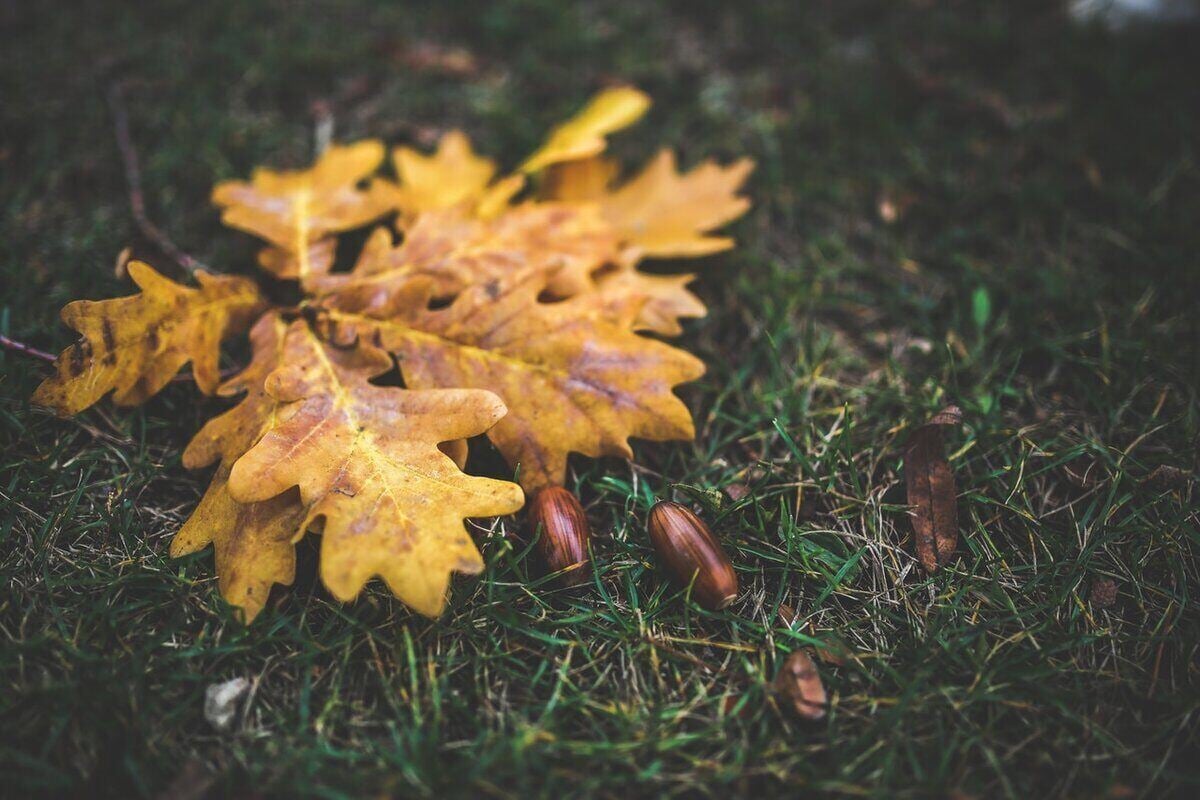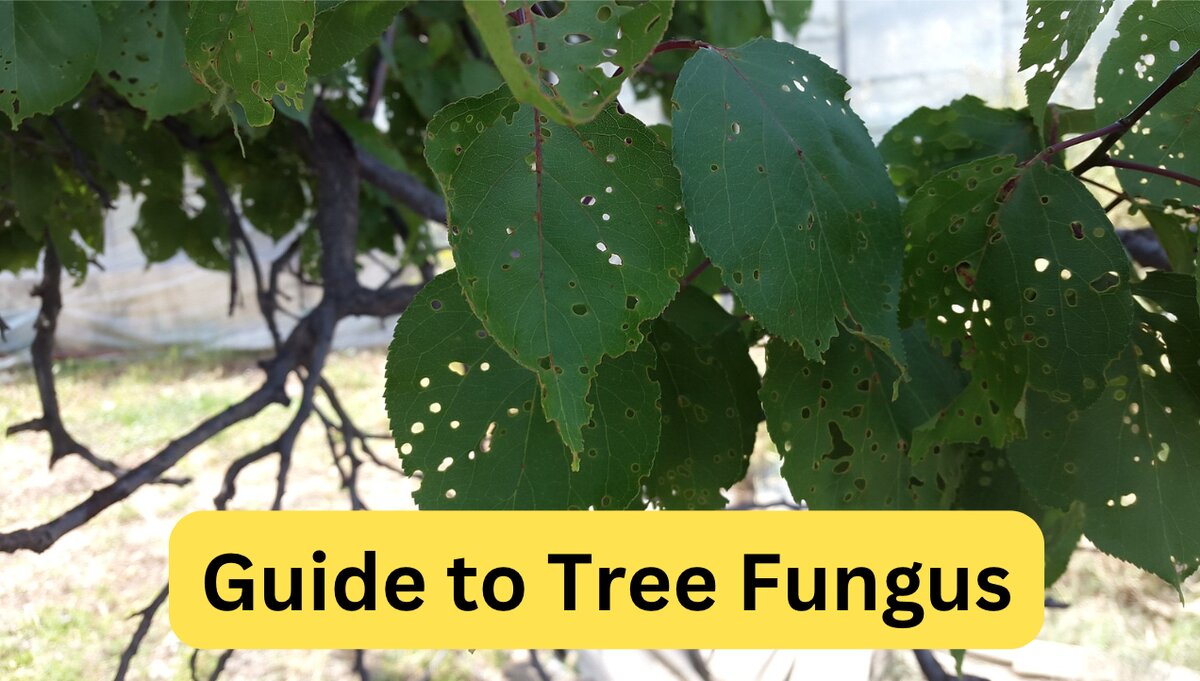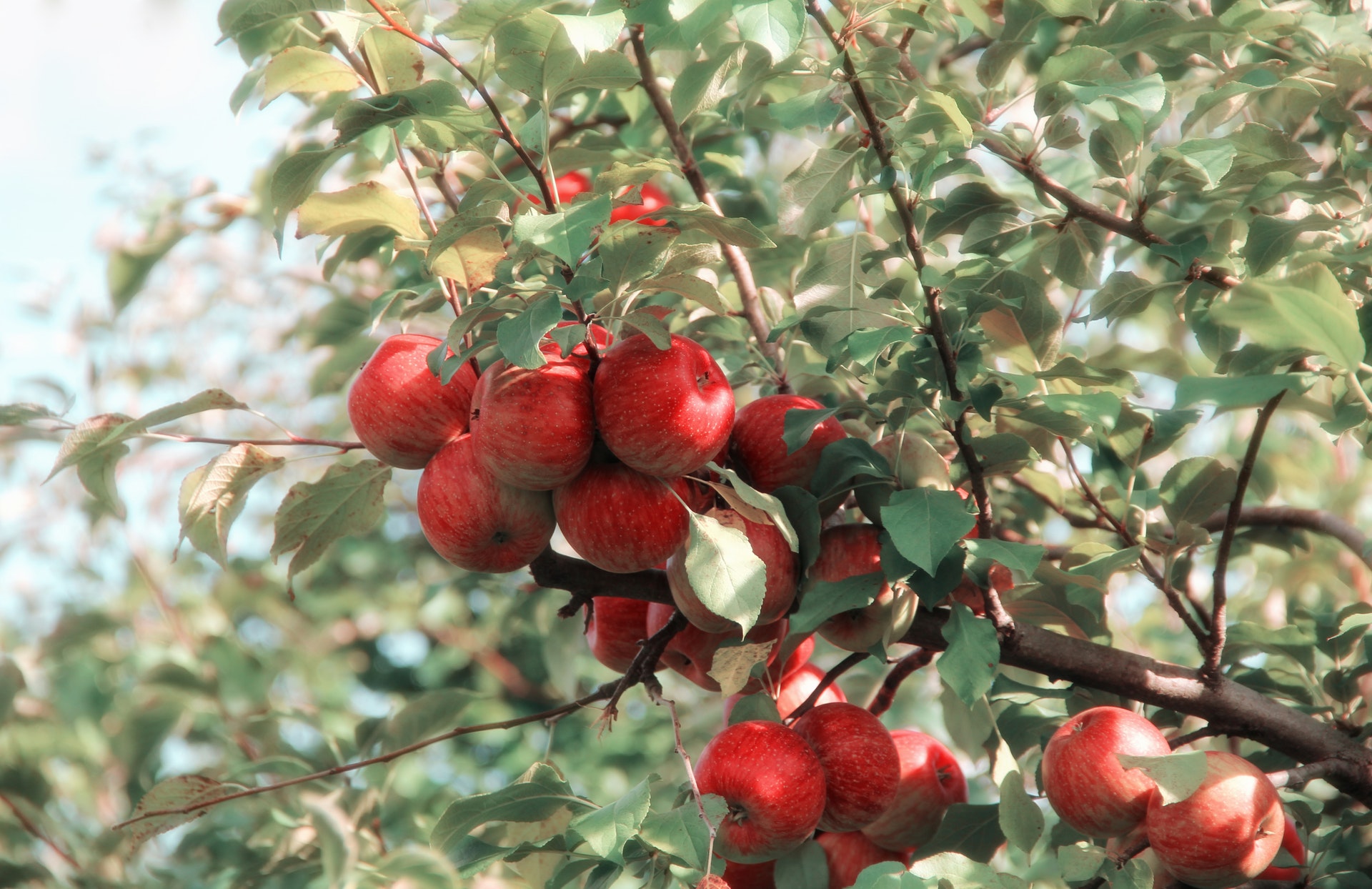
After all of the hard work, time, and energy you’ve spent to produce an abundant apple harvest, don’t lose your fruits to disease. Apple tree diseases appear frequently and spread from tree to tree. We’ve pared down common apple tree disease information to help you discover the best ways to treat them.
The right preventive and treatment measures increase your chances of controlling these harmful diseases. Some diseases are more treatable than others, while others have no cure. Identifying symptoms as soon as possible is important to prevent further spread to healthy apple trees.
8 Apple Tree Diseases and How to Treat Them
We’ve gathered a whole bushel (eight, in this case) of apple tree symptoms, causes, and treatments for you to protect your orchard.
1. Apple Scab
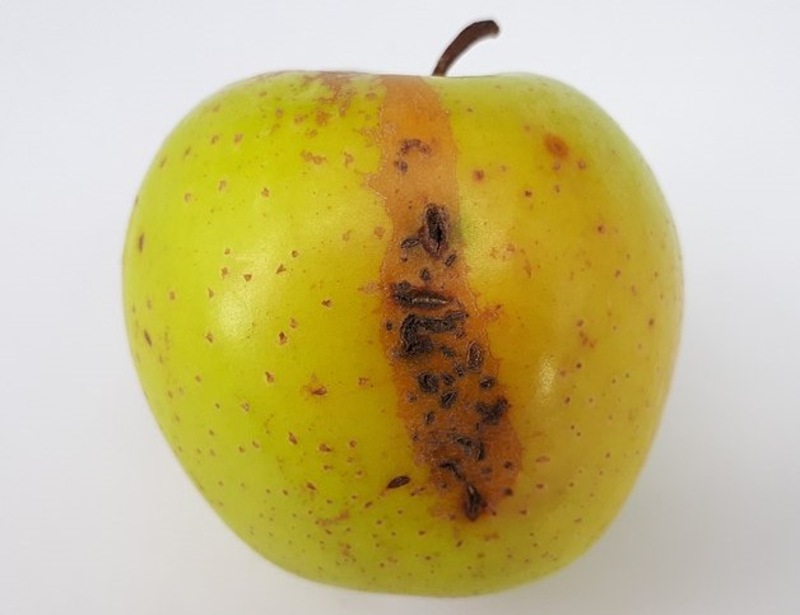
Apple scab is a fungal disease that can weaken a tree and spoil the fruits. The good news? By planting resistant varieties or using fungicides, you can avoid this bitter fate and save your apples and your tree.
There are many apple tree species that are resistant to apple scab, including Honeycrisp, Freedom, and William’s Pride. Some popular cultivars that are susceptible to apple scab are McIntosh, Cortland, and Macoun.
Symptoms: Brown or olive green spots develop on apple tree leaves, which may curl and fall off. On the fruit, dark green spots appear on its surface (later becoming darker, flaky, and even cracked). Infected fruit will usually drop, and infections may limit flower formation.
Causes: Spores released from infected apple leaves that have remained on the ground through winter. These spores then infect nearby apple trees. Apple scab can also spread from nearby trees already infected. Frequent rains and prolonged leaf wetness enable severe scab infection conditions.
Treatment: Rake up leaves and remove them from the orchard before May. Remove abandoned apple trees within 100 yards of your orchard. The University of Maine (UMaine) Cooperative Extension recommends applying preventive sprays such as captan, sulfur, or other fungicides.
Season: According to the UMaine Cooperative Extension, infections can occur as soon as early May when green tissue emerges from the bud. The disease continues to spread all season with each rainfall.
Risk: Apple scab rarely kills trees. Severe cases may cause complete defoliation by early summer. Repeated infections will weaken the tree, making it susceptible to other diseases.
2. Sooty Blotch and Flyspeck
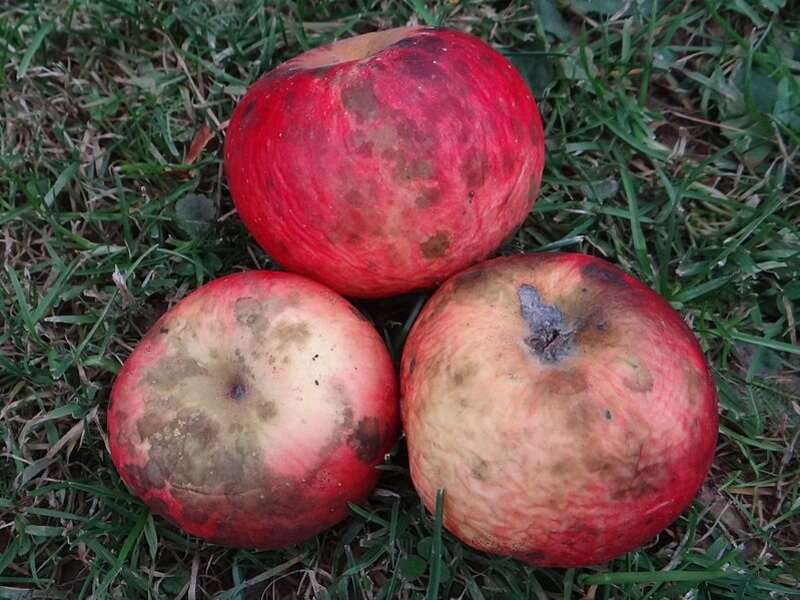
Flyspeck and sooty blotch are fungi that grow on the surface of apples. They cause blemishes on the apple’s surface but do not harm it. They often appear together and develop in the late summer.
There are no known apple cultivars resistant to sooty blotch and flyspeck.
Symptoms: Flyspeck is a fungus that appears as circular clusters of tiny, defined black dots. Sooty blotch forms irregular, olive-green blemishes around the apple’s surface. Visible symptoms take a month or more to appear after infection. Sooty blotch and flyspeck prefer conditions with high humidity in unpruned, large trees or trees with lots of morning dew.
Causes: The fungi causing these two diseases overwinter in the twigs of apple, pear, and woody plants. Spores of the sooty blotch and flyspeck fungus splash onto fruits during rainfall. The spores may also become airborne and affect nearby fruits this way.
Treatment: The UMaine Cooperative Extension recommends applying a fungicide application in mid to late July, with a second application in August. Prune and thin the apple trees to increase air circulation and dryness.
Season: Warm, humid weather conditions lead to disease development.
Risk: These two diseases do not cause rots in the fruit. Affected apples are safe to eat.
3. Cedar-Apple Rust
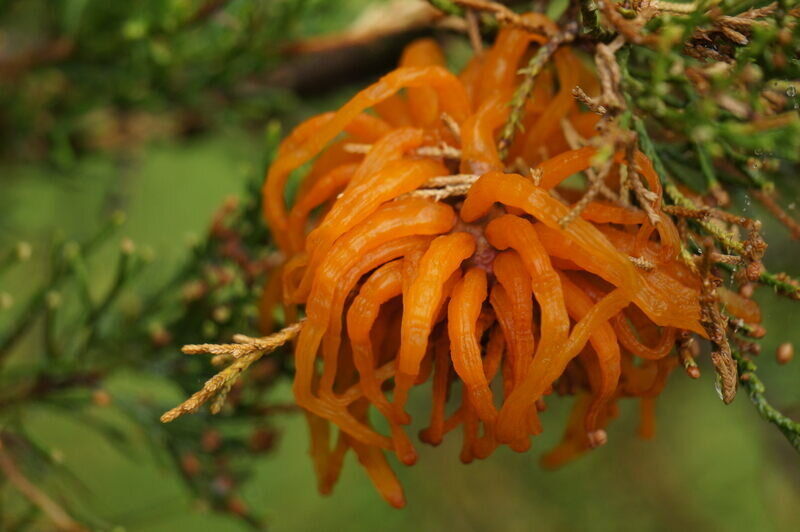
Cedar-apple rust is easy to spot with tell-tale yellow or orange spots that develop on the leaves in early stages, then galls that form on branch tips. The fungus is carried on the wind, quickly making it spread.
Resistant apple cultivars include Black Oxford, Enterprise, and William’s Pride. Golden Delicious apple trees are quite susceptible to cedar-apple rust.
Symptoms: Yellow or orange spots approximately 0.25 inch in diameter develop on the leaves. These colorful spots are vibrant on the upper surface of the leaf, and as the spots age, black dots form in their center. Galls develop on branch tips in early spring. These galls swell up to 2 inches in diameter and produce bright orange, jelly-like tubes.
Causes: Cedar-apple rust occurs when apple trees are grown close to Eastern red cedar and other junipers. Apple trees, Eastern red cedar trees, and junipers spread the disease to each other. The fungus overwinters in infected branches and galls on red cedar and juniper trees.
In spring, the galls produce the orange, gummy, fungal growth, which creates spores in wet conditions. These spores are then carried by the wind to apple trees up to one mile away. Over the summer, the infection begins to grow.
As the apple tree leaves develop the bright red spots on their upper side, the undersides of the lesions develop small raised tubes that produce powdery, orange spores. These spores are then released mid to late summer to infect juniper and red cedar trees.
Treatment: To prevent the spread of disease, the UMaine Cooperative Extension recommends applying fungicides containing fenarimol or myclobutanil. Avoid planting the host trees near one another. Inspect nearby juniper and red cedar trees in late winter or early spring. Prune and remove galls before the orange, gummy structures form in the spring.
Season: The disease spreads to apple trees from late April to mid-June.
Risk: Cedar-apple rust should not cause severe damage to your tree’s health.
4. Powdery Mildew
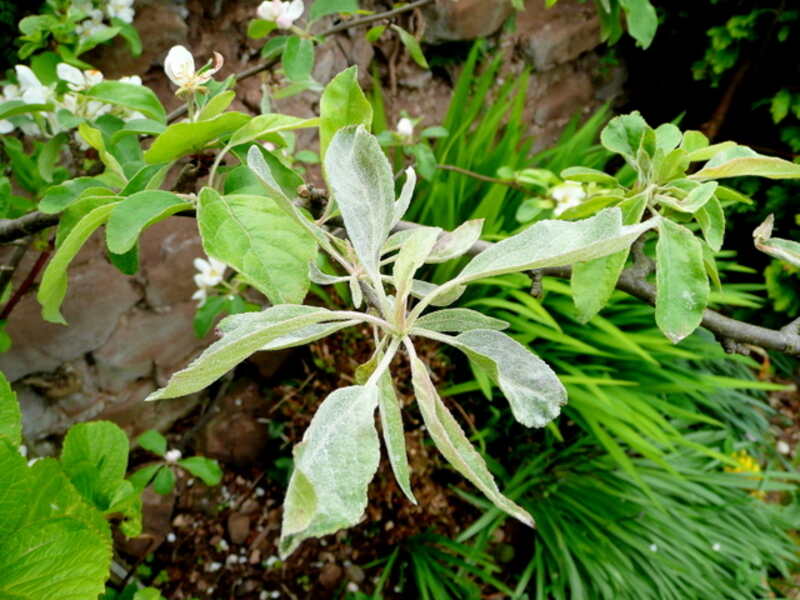
Powdery mildew is caused by a fungus that hinders the apple blossoms’ production of fruit and stunts the apple tree’s growth. The most noticeable symptom is a powdery white coating on the leaves.
Apple trees susceptible to powdery mildew are Jonathan, Bonza, Jonagold, Elstar, Pink Lady, Lady William, and Gala.
Symptoms: The fungus causes gray-white powdery patches to form on leaves. Leaves and shoots may turn brown in mid-summer.
Causes: The fungus overwinters inside infected buds. As these buds open in spring, they become covered with powdery spores. The wind carries the spores to infect new leaves, fruit, and shoots.
Treatment: Prune infected branches and twigs early in the season. If the disease is severe, fungicides can be used for treatment.
Season: This disease prefers hot, dry conditions and begins to spread when buds open in the spring.
Risk: Though it does stunt the tree’s growth and fruit production, powdery mildew will not kill your tree.
5. Fire Blight
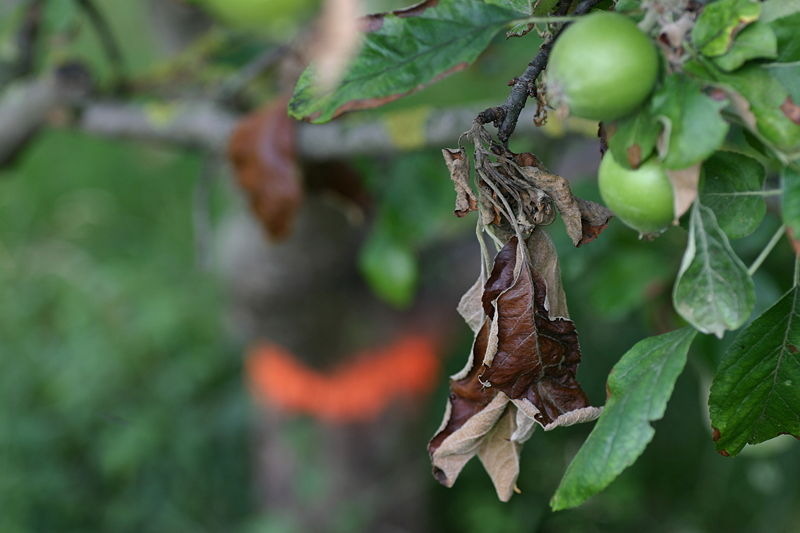
Fire blight is bacterial disease that affects apples and pears and is difficult and expensive to control. There is no cure for this disease, and it can kill your apple tree, making prevention critical. It’s best to plant the most tolerant cultivars possible.
Varieties such as Arkansas Black and Early McIntosh are moderately resistant. At the other end of the spectrum, cultivars such as Rome Beauty and Braeburn are highly susceptible.
Symptoms: Fire blight will cause infected flowers to turn black and die. The disease moves along the branch, killing twigs, and the leaves on affected branches begin to wilt and blacken but remain attached to the trees.
Affected parts of the tree can include blossoms, stems, leaves, and fruits, and your tree develops a fire-scorched appearance. The bacteria survive in cankers, which appear as sunken lesions on the tree.
Causes: The bacterium Erwinia amylovora causes fire blight. During wet weather conditions in the spring, you may find a milky liquid oozing from infected areas. This liquid contains fire blight pathogens. Insects and splashing rainfall can spread this disease and infect other trees.
Treatment: Preventive controls include selecting tolerant apple tree varieties and applying bactericides and insecticides. Prune blackened twigs and branches with cankers using sanitized tools during the dormant season. You may spread the disease if you prune during the growing season.
Destroy all infected prunings by burning or burying them. If fire blight has been severe the previous year, the Clemson Cooperative Extension recommends one spray of a copper fungicide applied immediately before bloom.
Season: The first symptoms of fire blight occur in early spring. It is most active when temperatures are above 60 degrees Fahrenheit, and the weather is wet or humid.
Risk: This bacterial disease spreads rapidly and can kill apple trees when conditions are right.
Pro Tip: For more information on which varieties of apple are most and least resistant to fire blight, check out the USDA Cooperative Extension page on fire blight susceptibility.
6. Bitter Rot
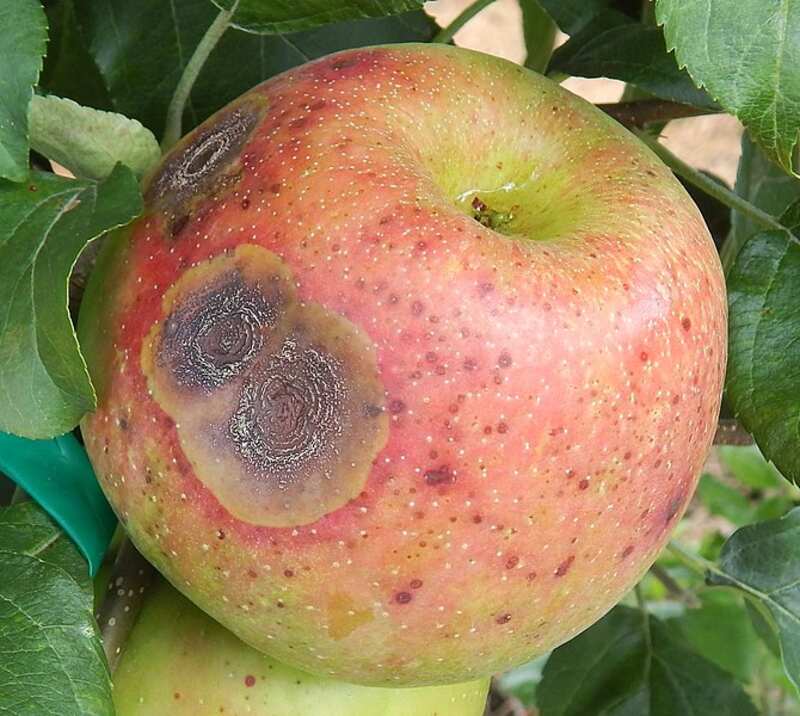
Bitter Rot is a fungus that causes decay in apples and pears. This disease overwinters in infected fruit and wood and develops the next year when the temps and humidity are high. Bitter rot is found in every state where these fruits are grown.
Light-colored apples, such as Empire, Honeycrisp, Mclntosh, Sunrise, Paulared, and Jonagold are most susceptible to bitter rot.
Symptoms: Lesions with concentric rings extend to the core of the fruit. These lesions often appear on the side of the apple with the most direct sunlight. A sour-smelling rot develops. As the infected fruit ripens, it continues to decay and dry up.
Causes: Bitter rot does not need the fruit to have a wound to establish infection. The fungus can infect the fruit through direct penetration of the skin. These concentric rings begin to ooze a gelatinous, pink substance made up of spores. This mass of spores is then spread by rainfall to other fruit.
Treatment: Remove diseased fruit, dead wood, and any cankers formed in the wood tissue. Penn State Extension suggests applying fungicides every 10 to 14 days through harvest and more frequently under bitter rot’s preferred conditions. The Extension recommends products called captan and ziram as protective control methods when combined with another fungicide.
Season: Bitter rot occurs in the summer when conditions are warm and moist.
Risk: Bitter rot can cause severe damage to your harvest.
7. Black Rot
Black rot is a fungus that causes spots on leaves in a “frogeye” pattern, as well as rotten fruit and cankers on branches. Sanitation, proper pruning, and proactively maintaining tree health will help reduce the spread of this disease.
Empire and Cortland are more susceptible than other cultivars, though susceptibility varies little throughout apple tree varieties.
Symptoms: Infected leaves form spots thought to look like frog eyes with reddish edges and tan middles. Large, brown, rotten spots develop on the apple, most commonly on the blossom end. Although the surface of the apple is brown, the flesh of the apple remains firm. Fruits shrivel up and dry out while remaining attached to the tree.
Causes: The fungus can affect trunks, leaves, branches, and fruits. Pycnidia, spore-producing structures, develop on infected fruit and appear as small, black spots. Rainfall and wind carry the spores to other susceptible areas. The fungus infects leaves, wood, and fruit through openings or wounds. Trees are most vulnerable to black rot when infected with fire blight.
Treatment: Remove dead or diseased branches and dried fruits. Burn or bury all infected plant materials. If you cut down any tree, remove the stump to ensure the spores do not spread.
Fungicides are typically not used to manage black rot. Use captan and sulfur products labeled for black rot control only if needed. Perform preventive measures for fire blight to ensure your trees do not become more susceptible to black rot.
Risk: According to the University of Minnesota Extension, leaf spots do not have a severe effect on your tree’s health unless many leaves turn yellow and fall off.
8. White Rot
Botryosphaeria dothidea is called “white rot” or “Bot Rot.” It is a fungus that affects apple, crabapple, chestnut, and pear trees, as well as grapes. Maintaining a healthy tree, proper pruning (and removal of fallen branches), and fungicides are common control measures.
Golden Delicious, Empire, and Jersey Mac are more affected by white rot than other apple tree cultivars.
Symptoms: Bot rot is caused by a severe fungal pathogen. New infections on twigs and limbs become evident in early summer appearing as small spots or blisters.
The white rot fungus infects an apple tree’s wood and fruit, but not the leaves. Apples begin to develop a soft rot, unlike bitter rot and black rot, which form firm rots. Sunken, watery lesions form on the surface, and red-skinned apples begin to fade in color. When white rot develops under cool conditions, the rotten area can appear as firm as black rot.
Causes: Infection and canker growth increase under drought, stress, winter injury, or fire blight. The cankers become indistinguishable from black rot cankers.
Black pycnidia, the spore-producing structures, develop on the surface of cankers. During wet periods, spores ooze out of the fruiting structures and are spread by rainfall. The infection then spreads by entering the wounds of vulnerable trees.
Treatment: Remove shriveled, rotten apples and prune deadwood. Perform preventive measures to ensure the tree does not experience stress. To decrease stress, remove fire-blighted wood, and water trees during drought.
Season: This is a severe and frequent late-season disease in apple trees.
Risk: If white rot has infested your tree, you may experience a 50% loss in fruit.
FAQ
You might be paying too much attention to your tree or not enough. Too much and too little water can cause problems. Nutrients can be washed from the soil if you water too much, for example. Also, pests or diseases like to attack weak trees. Other possible causes include fungal diseases, excessive fertilizer, or transplant shock.
Not necessarily. Many tree diseases can be stopped, slowed, and rectified with treatments. A certified arborist can make the call for you if you’re not sure.
In some cases, spots or discoloration on the leaves and fruits or sunken areas on branches (cankers) are visible. Other early symptoms of disease include leaf curling and a white, powdery substance on your leaves. If you act quickly, you may be able to stop or slow the spread of disease.
When to Call a Professional
In severe cases, consulting a professional, licensed arborist near you is an essential first step to saving your apple tree. No matter what the Osmonds sang, one bad apple can spoil the whole bunch. Call a tree care professional right away. If your apple tree disease goes ignored, it may become fatal, infest adjacent apple trees, or destroy your harvest.
A certified arborist can apply treatments and remove infected trees. Arborists also assist homeowners before symptoms occur by performing preventive disease measures. It’s never too early to call a professional arborist for your apple tree, but it can be too late.
Main Image Credit: Elizabeth Tr. Armstrong / Pexels
